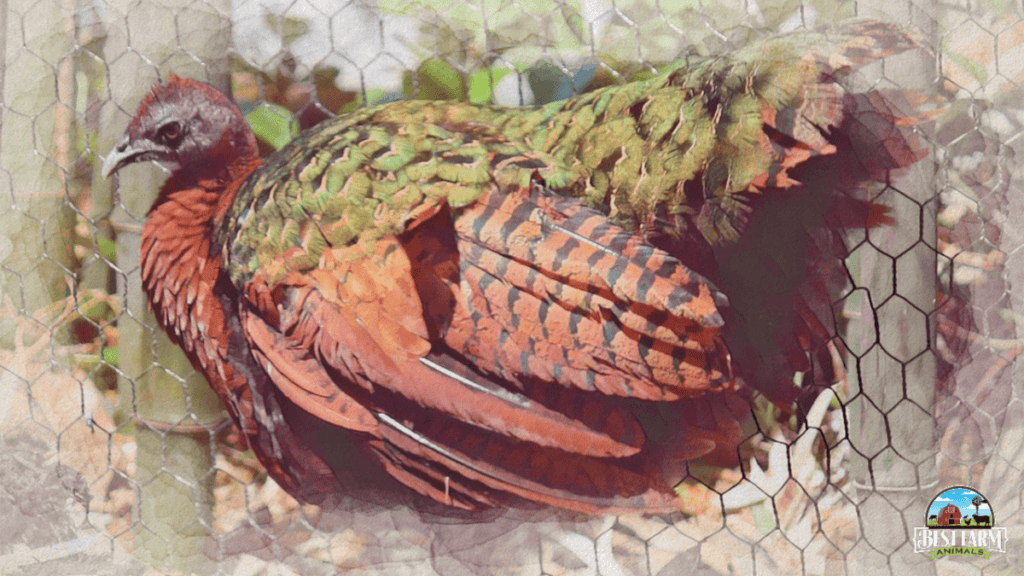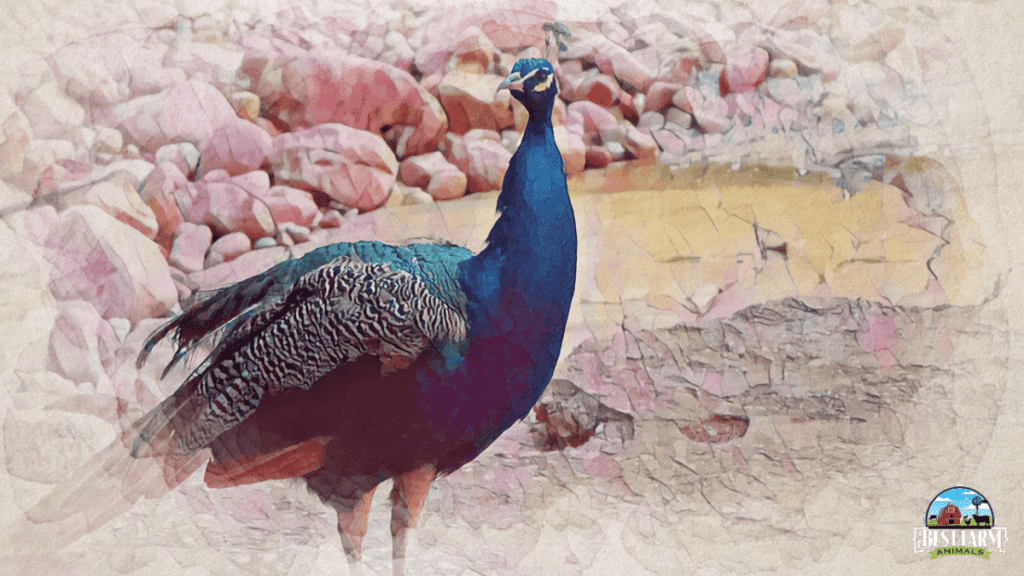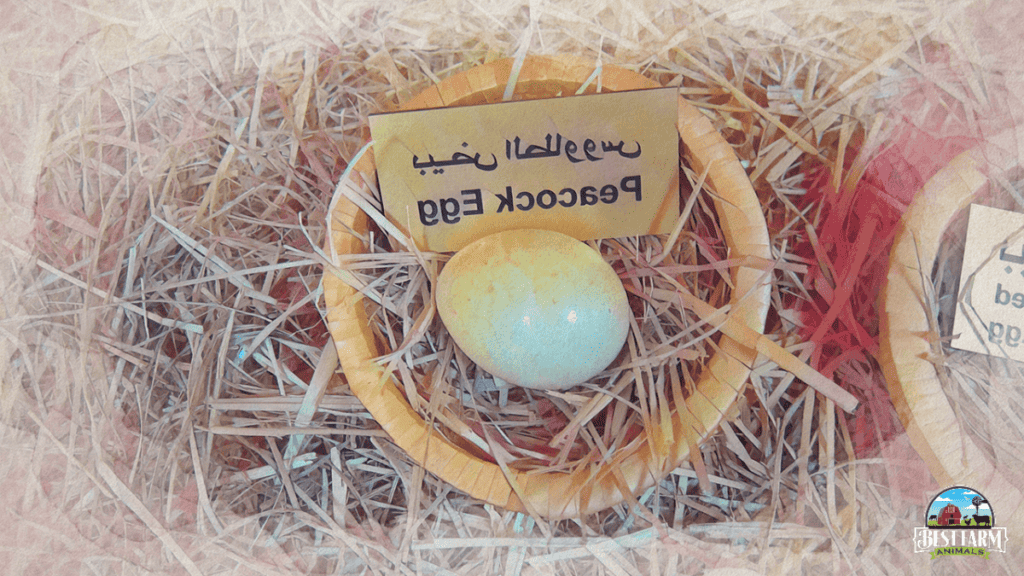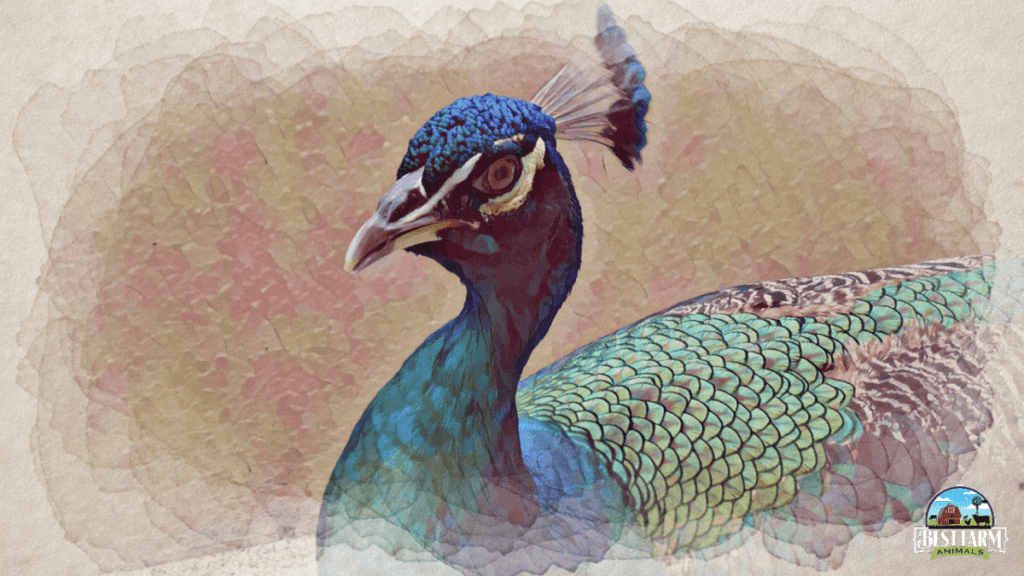Peafowl are exquisite, extravagant, and…expensive to buy, right? Well, that mostly depends on the type of peafowl you’re interested in and their quality. Not all peafowl are actually that exorbitant. For example, typical backyard peafowl may cost around $50.
Yet it’s extremely important to examine the costs of buying and raising peafowl before purchasing. Work them into your budget first to ensure you can comfortably afford them!
How much do peafowl cost?
Adult India Blue peafowl cost on average $100-$500 each, with peacocks at the lower end of this range and peahens at the higher end. Peachicks can be priced at $10-$60, and hatching eggs generally range from $45-$60. Rare peafowl variations are more expensive, with some adult birds priced at over $2,000.
Let’s explore the real costs of buying and raising peafowl in further depth, and then cover ways to make money with them! With a little time, you’ll enjoy the benefits of raising peacocks without too much cost!
How Much Do Peafowl Really Cost?
There are lots of variables that influence how much peafowl cost. For example, peahens are often – although not always – more expensive than peacocks. This is because from a breeder’s perspective, peahens are more valuable than males, even though peacocks are more popular.
Lineages and breed standards also play a significant role. High-quality birds that represent breeding standards command a much higher price than run-of-the-mill peafowl with conformational flaws.
Perfect conformation may not interest you much, but you will need exemplary peafowl if you plan to breed them later on. If your only plan for peafowl is to enjoy their beauty, you don’t need to worry about this. In that case, you can also buy cheap or even free peafowl to enjoy in your backyard.
However, ensure the birds you intend to purchase are healthy first. Some people try to sell off their ill peafowl to unsuspecting novices for an outrageously cheap price ($30, for example).
Cost of Adult Peafowl
On average, you should be able to find adult India Blue peafowl for between $50-$400. Peahens are usually at the higher end of this range, costing peacocks less. Some breeders and farms will also offer a discount on adult peafowl pairs or trios.
Cost of Peachicks
India Blue peachicks generally cost between $10-$60. This depends on breeding lines and quality.
If you want to buy peachicks, you should purchase three at minimum, costing between $30-180. However, some hatcheries and breeders require you to buy a minimum of five or more, so make sure you factor this into your decision.
Peachicks are appealing to raise for a few reasons. First, it’s fun to be able to watch them grow up, gradually gain their plumage, and become stunning adults! Second, you’ll be able to bond with a peachick much more readily than an adult – although this isn’t a guarantee, either.
That said, peachicks are notoriously difficult to raise. If you’re new to peafowl, you’ll have an easier time starting with adults.
Cost of Hatching Peahen Eggs
Many purchase fertile eggs to hatch themselves in an incubator or using a broody hen. Peahen eggs for hatching cost on average $45, but a better range is $35-$60. Bear in mind that you usually need to purchase a minimum of four or more eggs, which will cost $140-$240.
It’s more difficult to hatch peahen eggs yourself, though, and hatch rates drop even further if the eggs have to be shipped long distances. For this reason, most US hatcheries refuse to ship outside the State they’re located in.

Prepare to Pay More for Peafowl Variations
Rare and exotic variations will command a higher price than standard India Blue. Consider this if you want a more unique variation to add even more variety to your flock of peafowl.
Leucistic India Blue Peafowl
Leucistic simply means “without a pattern.” These peafowl are completely white, and often inaccurately mistaken as albinos. Leucistic peacocks in particular are incredibly stunning. This gene was the first recognized variation in India Blue peafowl.
Although they’re quite common, leucistic peafowl cost between $250-$500 each. Average birds can be found at the lower end of this range, while a quality breeding peahen can fetch $500 by herself.
Leucistic peafowl tend to be more delicate than other variations. You’ll need to take greater care with them than you do with India Blue peafowl. This means insulating the coop extremely well and keeping them out of the elements as much as possible. They may also require heating during the winter.
Black-Shouldered Peafowl
While the other variations are color mutations, black-shouldered is simply a pattern variation. They’re aptly named for the peacock’s striking black shoulders. The hens are gorgeous, with a white base and charcoal flecks.
Black-shouldered peacocks cost between $200-$250, while black-shouldered peahens often cost around $400-$450.

Price Comparison of India Blue Peafowl Variations
| India Blue Variations | Per Adult Peacock | Per Adult Peahen |
| India Blue (Standard) | $100-$250 | $400-$450 |
| Black-Shouldered | $200-$250 | $400-$450 |
| Leucistic (White) | $250-$400 | $500 |
| Silver Pied | $500 | $500 |
| Cameo | $600 | $500 |
| Mocha | $500 | $500 |
| Peach | $600 | $650 |
| Charcoal | $500 | $700 |
| Indigo | $1,000 | $1,000 |
Java Green Peafowl
There are three species of peafowl: India Blue, Java Green (also known as Malaysian Green or Javanese), and Congo. Congo peafowl are considered endangered and generally aren’t available for sale.
Although less common than India Blue, Java Green peafowl are beyond striking. Java Green peafowl usually cost upwards of $1,500, but the average is $2,000. It’s extremely difficult to find Java Green peachicks for sale, and most breeders don’t sell hatching eggs due to low hatch rates.
In addition, this species of peafowl is more wild than India Blue peafowl. They’re known to be more aggressive and thoroughly unsuitable for beginners. Try to gain experience with more tame India Blue peafowl before you attempt to raise Java Green.
Java Green peafowl are also extremely sensitive to the elements, particularly the cold and damp. They need very particular conditions in order to thrive. If you experience harsh winters, you should use heating in the coop for Java Green peafowl.

Expenses of Raising Peafowl
The initial purchase cost is far from the only expense incurred with peafowl. You’ll also need to factor in housing, feed, deworming, and supplies. Don’t forget to account for shipping or transportation fees and costs!
If you plan to breed your peafowl or even hatch out peachicks, you’ll also need quality incubators and other equipment. You can reduce this expense by purchasing your incubator ahead of the season.
Peacock Housing Requirements
All peafowl require a secure, warm, and well-ventilated (but not drafty) coop, even if you plan to free-range.
If you’re purchasing peachicks, they must stay in a brooder until they’re older. Don’t let peachicks out to free-range. They won’t survive for long. Brooders cost on average $100-$500.
When the peachicks are around X months of age, you can move them from the brooder to an outside coop. Your coop will mostly likely cost between $500-$2,000 depending on the price of supplies, your design, and whether you build it yourself or hire someone.
Make sure your peafowl pen is enclosed with hardware cloth, which is much stronger and more effective than chicken wire.
I do not recommend free-ranging peafowl. They quickly become a nuisance to you and your neighbors, and they’ll most likely be killed by predators sooner rather than later. If you absolutely must free-range, make sure you do it gradually and incrementally. Peafowl need time to acclimate to their new home.
| Tip: Keep your peafowl separate from your other birds, including chickens, ducks, turkeys, pheasants, guineafowl and geese. Poultry carry blackhead disease (along with other illnesses) that are fatal to peafowl. Peafowl also tend to be too territorial; they often bully smaller birds and compete with larger birds. |

Peacock Feed and Nutrition Requirements
Peafowl require 20% protein in their food. (Here’s a good food choice on Amazon) They should be fed non-medicated, organic game or turkey feed. Feed peachicks game starter until they’re about six to seven weeks, then switch them to game grower.
If high-protein feed isn’t available to you, try duck feed with a mix of cooked meat, worms, and dog or cat kibble.
It costs on average $35 per month to feed a trio of peafowl. You should keep track of the size of your feed bag, how much each bag costs, and how long it lasts your peafowl for a more accurate monthly cost. Remember to also factor in sunflower seeds, corn, and other snacks you give your peafowl.
Miscellaneous Costs of Peafowl
You’ll need shavings as a substrate inside the coop. One bag typically costs around $15 and will last one coop around a month.
There’s also the cost of deworming your peafowl, which is usually done three times per year. Consult your local avian vet to learn about the best dewormers to use.

Making a Profit With Peafowl
Peafowl are profitable if you can find a keen market for them. You may not generate a lucrative business right away, but you can at least break even and cover the costs of keeping peafowl.
There are many factors to consider, such as competition, market interest, and more. You’ll have to tailor your approach depending on your area and strategy. For example, will you ship outside your State or province if there isn’t enough local interest?
Breeding Your Peacocks
Breeding is by far the most profitable venture with peafowl. If your adult peacock is worth $250 and your hens cost you $450, then you should easily be able to sell peachicks for $30-$50 each.
Assuming you have two three-year-old peahens that can each lay two clutches per year, you can potentially make $720-$1,200 with twenty-four peachicks. However, hatch rates and survival rates aren’t usually that high.
This also means that if your adults cost you $100 each, you should only sell their peachicks for $15-$25.
Every variation will command a different price. For example, you can sell leucistic peachicks for a higher price than India Blue peachicks. Rare variations will require a higher upfront investment, but you’ll profit more from breeding.
I recommend beginning with a breeding pair or trio of India Blue or black-shouldered peafowl. As you gain more experience and confidence, add another pair or trio of a different variation.
Peacocks are able to breed at three years of age, but peahens begin laying their first clutch at two. Some peahens may even start laying as yearlings, but this is rare.
While you can allow your peahens to set and hatch their own peachicks, this isn’t a reliable method. Try using either an incubator or broody chickens, such as silkies or Australorps.
If you don’t have experience with peafowl, wait a few years. Customers should see even casual backyard breeders as an authority on their birds. You should also be able to answer any questions people have about peafowl accurately and confidently, which novices are unlikely to do. This also includes questions about genetics!
Here are a few extra tips on Making Money Breeding Peacocks:
- Build a trustworthy, great reputation
- Reduce expenses by maintaining equipment
- Learn to market effectively
- Keep meticulous record
- Ensure your peafowl are high-quality

Hatching Peacock Eggs and Keeping Them Alive
Selling hatching eggs is a unique, profitable, and easy way to make extra money with peafowl. It removes the hassle of hatching peachicks yourself. Try to avoid shipping peahen eggs, however.
Fertile peahen eggs generally command $20-$45+ each, and most people require customers to buy a minimum of four eggs. This means you can stand to make $80-180 or more for every four eggs.
Make sure you know exactly which variation of peafowl the eggs are, especially if you have multiple variations. You’ll need to keep an impeccable record of your lines, even more so than selling peachicks.
For example, if you aren’t certain whether or not you set black-shouldered peahen eggs rather than standard India Blue, you only need to wait until they hatch. Black-shouldered peachicks hatch a creamy white color rather than a typical tawny brown. In this case you can simply market them accordingly.
With hatching eggs, however, you may disappoint customers if they wanted standard India Blue and ended up being surprised by black-shouldered peachicks. Label all eggs you intend to sell, and keep breeding pairs separate to avoid cross-breeding.

Selling Peacock Feathers
Peacocks drop their gorgeous train feathers every summer, and regrow them through the winter. You can sell these to artists, art and decoration supply shops, florists, and individuals who simply enjoy having them to display.
Since each peacock drops over two hundred feathers, you can make quite a bit from this! Peacock feathers are priced between $1-$35 each depending on your market. If you manage to sell all two hundred, you can potentially make $200-$7,000. People will also pay more for an assortment of feathers from different, uncommon variations.
You’ll also sell feathers quicker by bundling them. Instead of each individual feather costing $8.00, bundle three feathers for $20.
Are you crafty? Consider turning your peacock feathers into jewelry, ornaments, or other crafts to sell. This increases the value of the feathers!
Make sure all peacock feathers you try to sell are clean and in pristine condition. Collect them everyday as your peacock drops them to avoid broken or snapped feathers.

Blogging and YouTube: Recording Your Peacock Journey
An indirect way to make money with peafowl? Write about your experiences with them to educate others. You can do this by either starting your own blog or writing for existing websites that pay (Best Farm Animals is one of them!).
If you prefer videos over writing, perhaps your matinee is YouTube. The same principle applies: generate useful, relevant, and engaging content about peafowl to draw an audience. Once you have a dedicated audience, you can begin employing strategies to make money on this platform
Here are a few specific ways to make money from a blog or YouTube:
- Ebooks
- Advertisements
- Affiliate Marketing
Conclusion
Peafowl are beautiful birds, but they require an investment. Make sure you calculate the costs of purchase, shipping/transportation, housing, and care, and budget accordingly.
Always thoroughly research any new animal you plan to add to your farm! This will save you an incredible amount of trouble further down the line. There’s a world of free information via the Internet and your local library.

